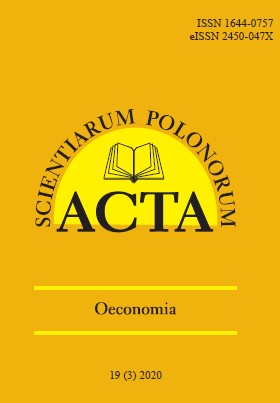DIVERSITY OF POLISH REGIONS IN THE LEVEL OF TECHNICAL INFRASTRUCTURE DEVELOPMENT
DIVERSITY OF POLISH REGIONS IN THE LEVEL OF TECHNICAL INFRASTRUCTURE DEVELOPMENT
Author(s): Iwona PomianekSubject(s): Regional Geography, Environmental Geography, Evaluation research, Transport / Logistics
Published by: Szkoła Główna Gospodarstwa Wiejskiego w Warszawie
Keywords: technical infrastructure; development potential; regional development; multivariate comparative analysis; Poland;
Summary/Abstract: The study aims to identify spatial diversity and possible concentrations of 16 Polish regions regarding their infrastructure development levels in the period of 2005–2018. Measuring development of technical infrastructure requires the use of several variables due to its multidimensional character. It justifies the use of multivariate analysis. Based on the method of Hellwig’s development measure, three groups of regions were defined. Five of the analysed regions did not change their position in the 2018 ranking as compared to 2005. These were regions from the top three: Śląskie, Dolnośląskie and Małopolskie (south-western Poland), as well as two regions in the class with the lowest level of technical infrastructure development: Warmińsko-Mazurskie and Podlaskie (north-eastern Poland). Although the leader of both rankings, Śląski region, took the most favourable values in 2018 concerning density and quality of roads, density of railway lines or green areas in towns, as a typically industrial, mining-related, intensely urbanized region is has needed to cope with a serious problem with air pollution, relating from the smallest amount of gas pollution retained or neutralized. In the other side, the two weakest regions were characterised by valuable environmental conditions (Warmińsko-Mazurskie) and a large share of agricultural area (Podlaskie). These natural and economic conditions may, on the one hand, prevent the development of technical infrastructure (e.g. road construction in Natura 2000 areas), and on the other hand, maintenance of such infrastructure could be unprofitable for both local government units and its users.
Journal: Acta Scientiarum Polonorum. Oeconomia
- Issue Year: 19/2020
- Issue No: 3
- Page Range: 75-84
- Page Count: 10
- Language: English

